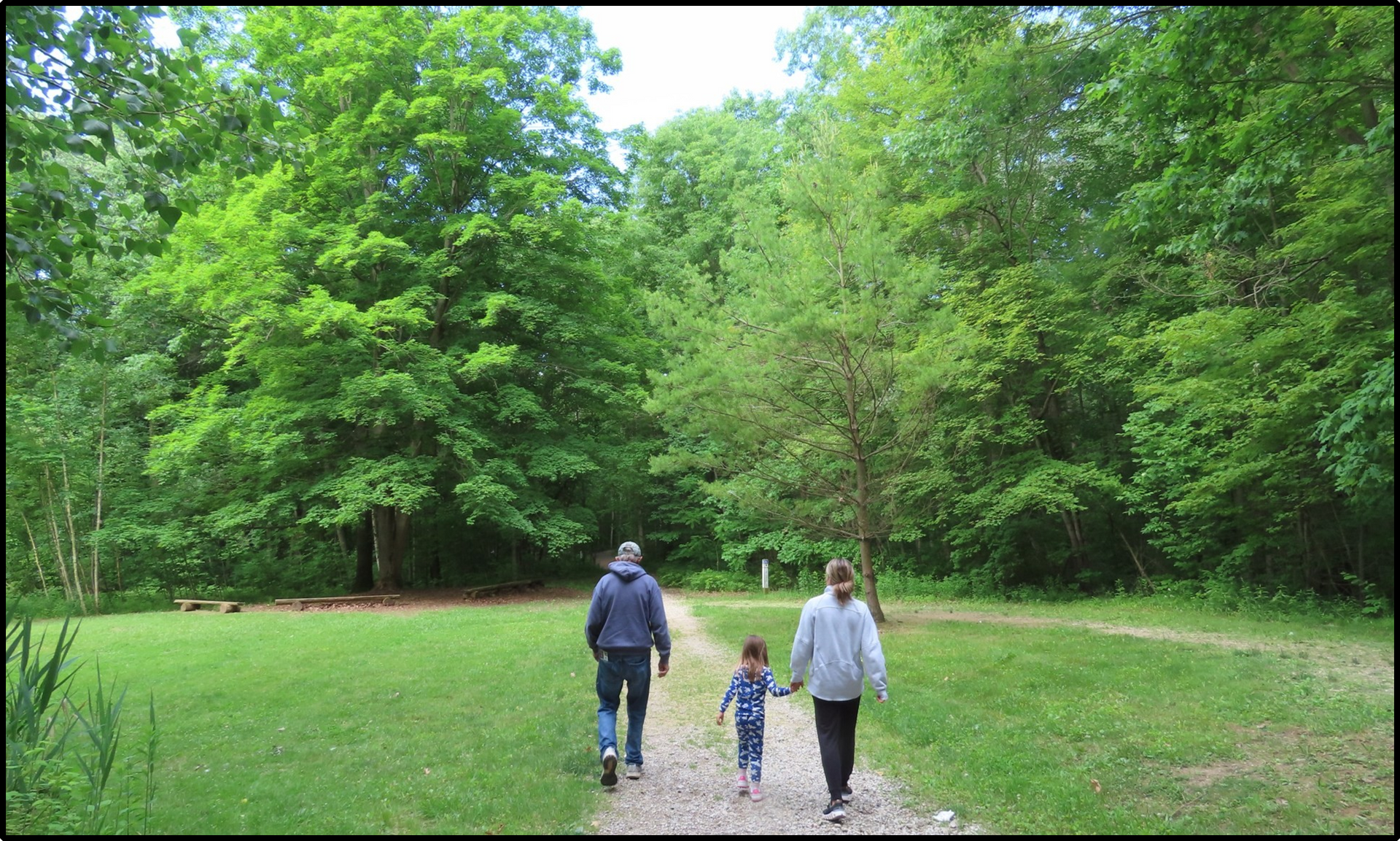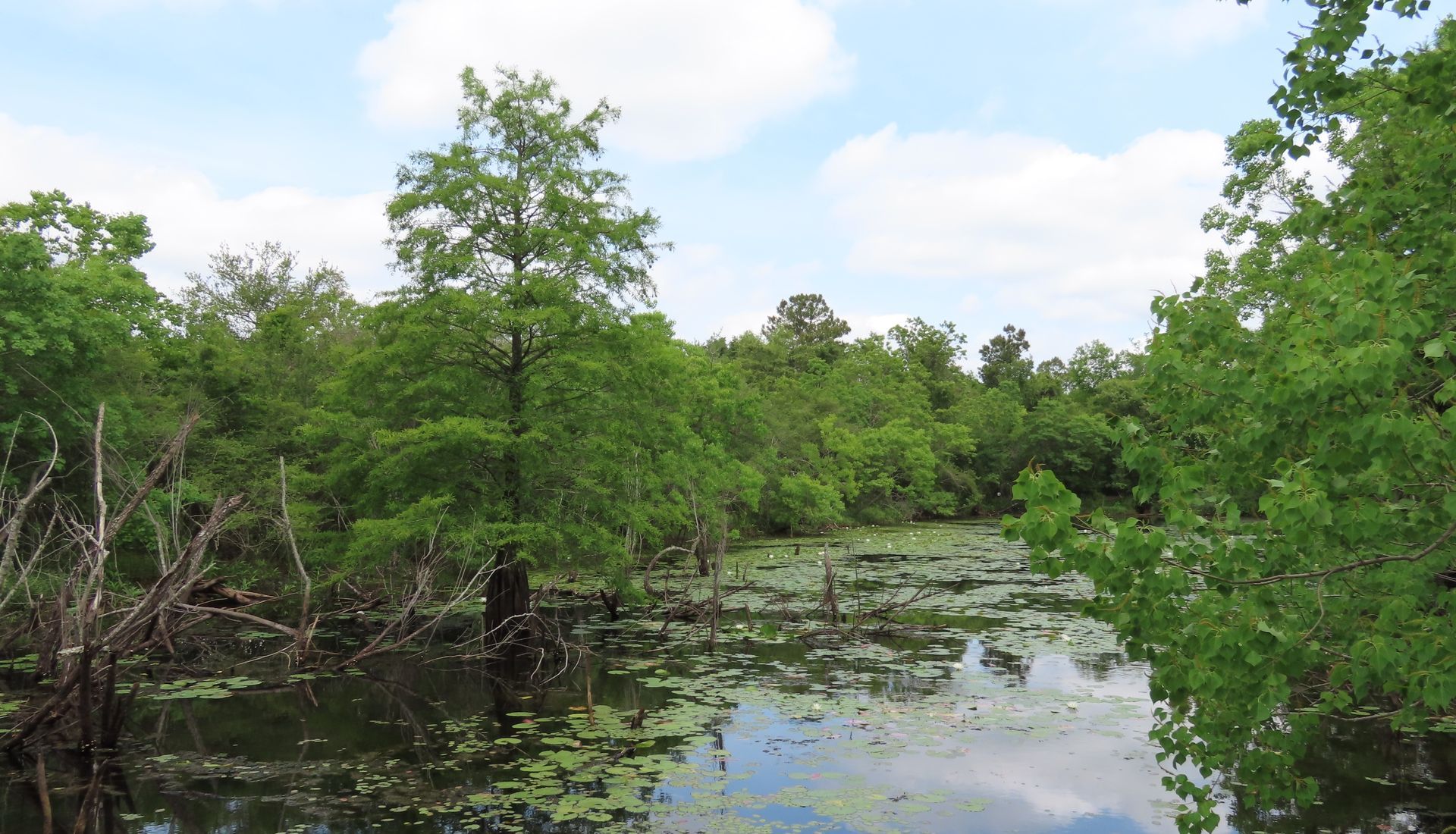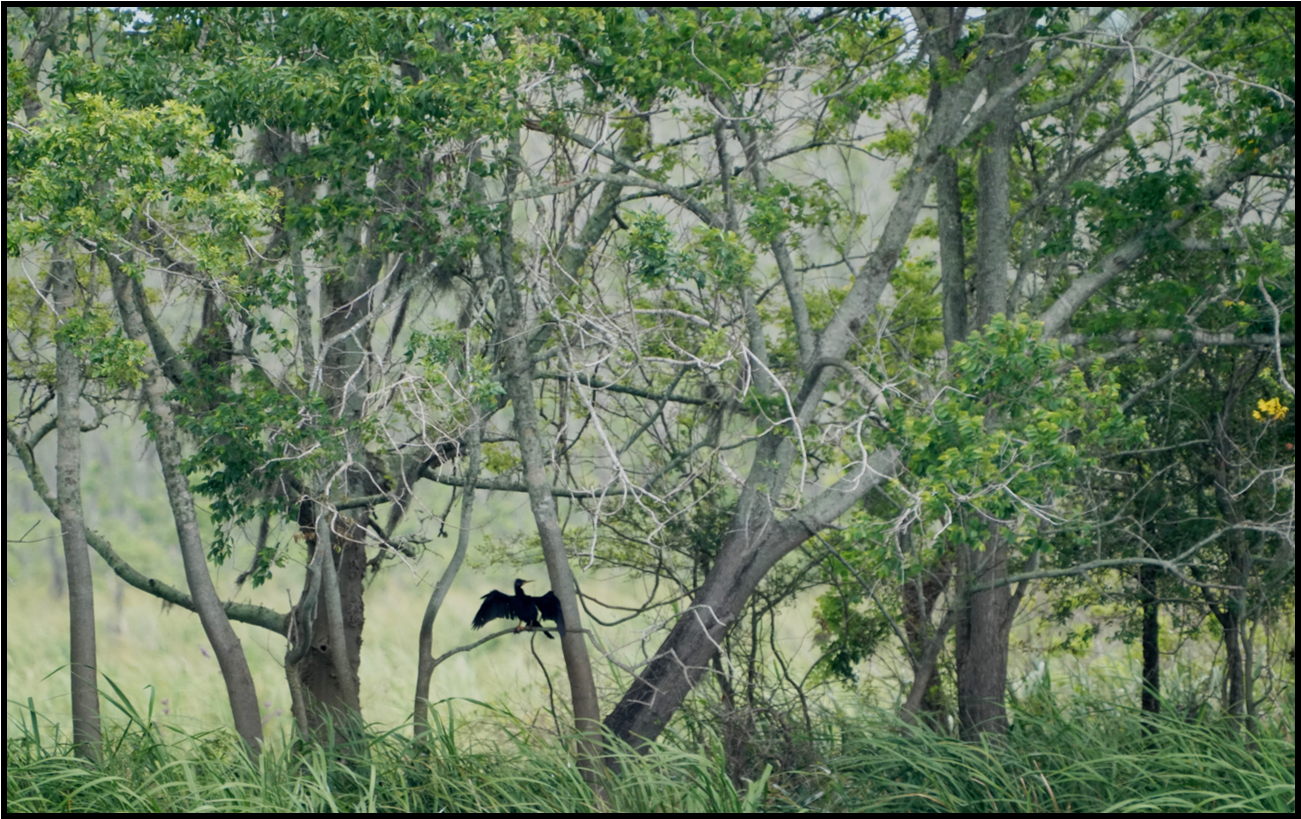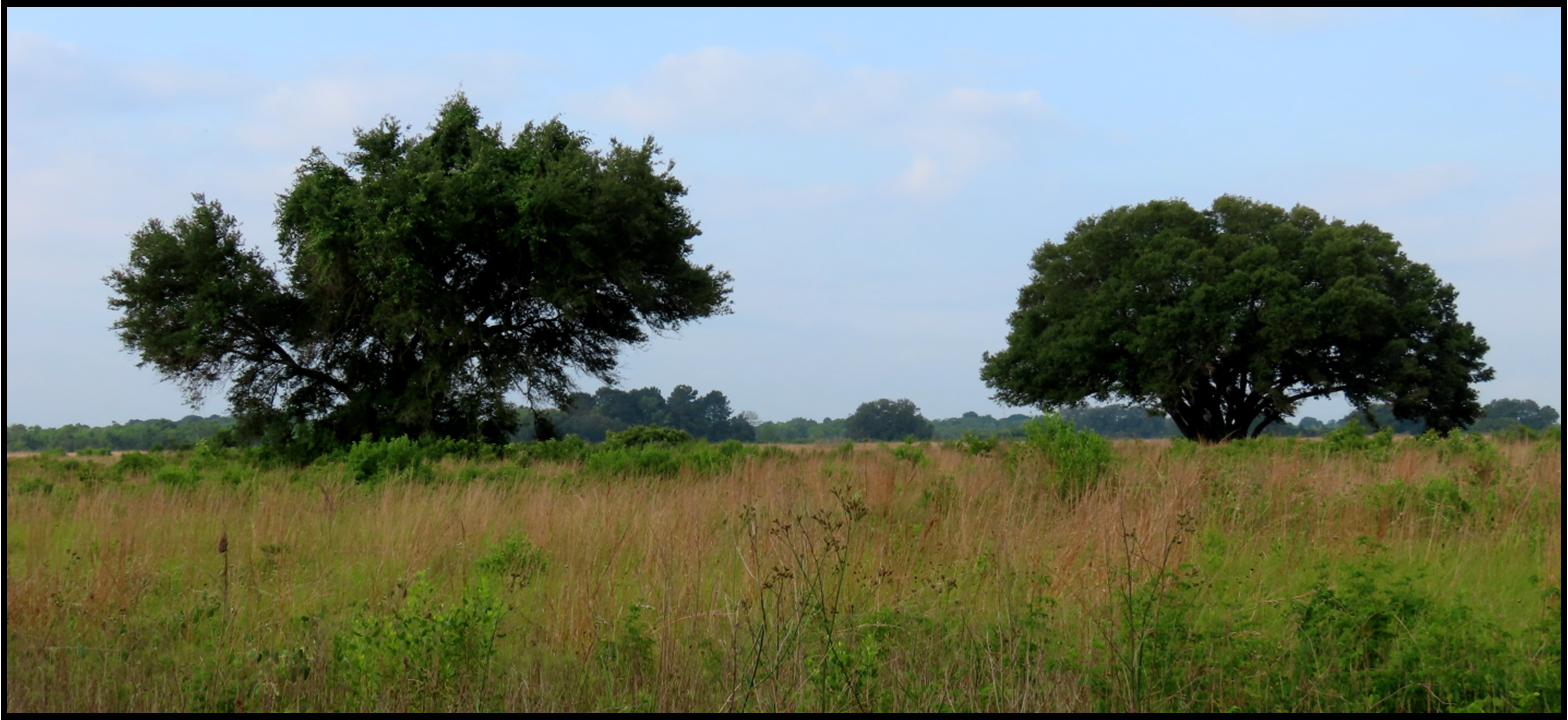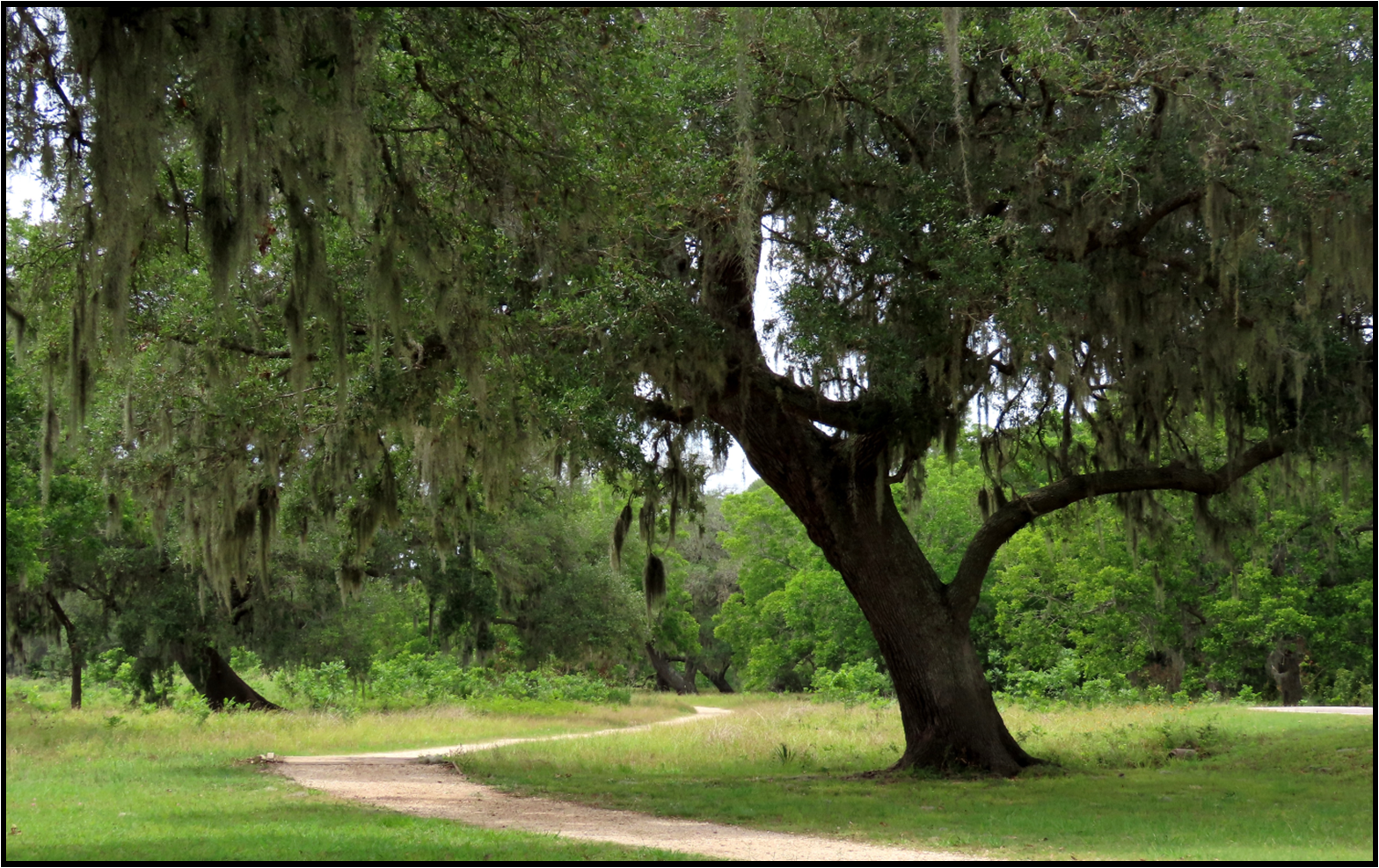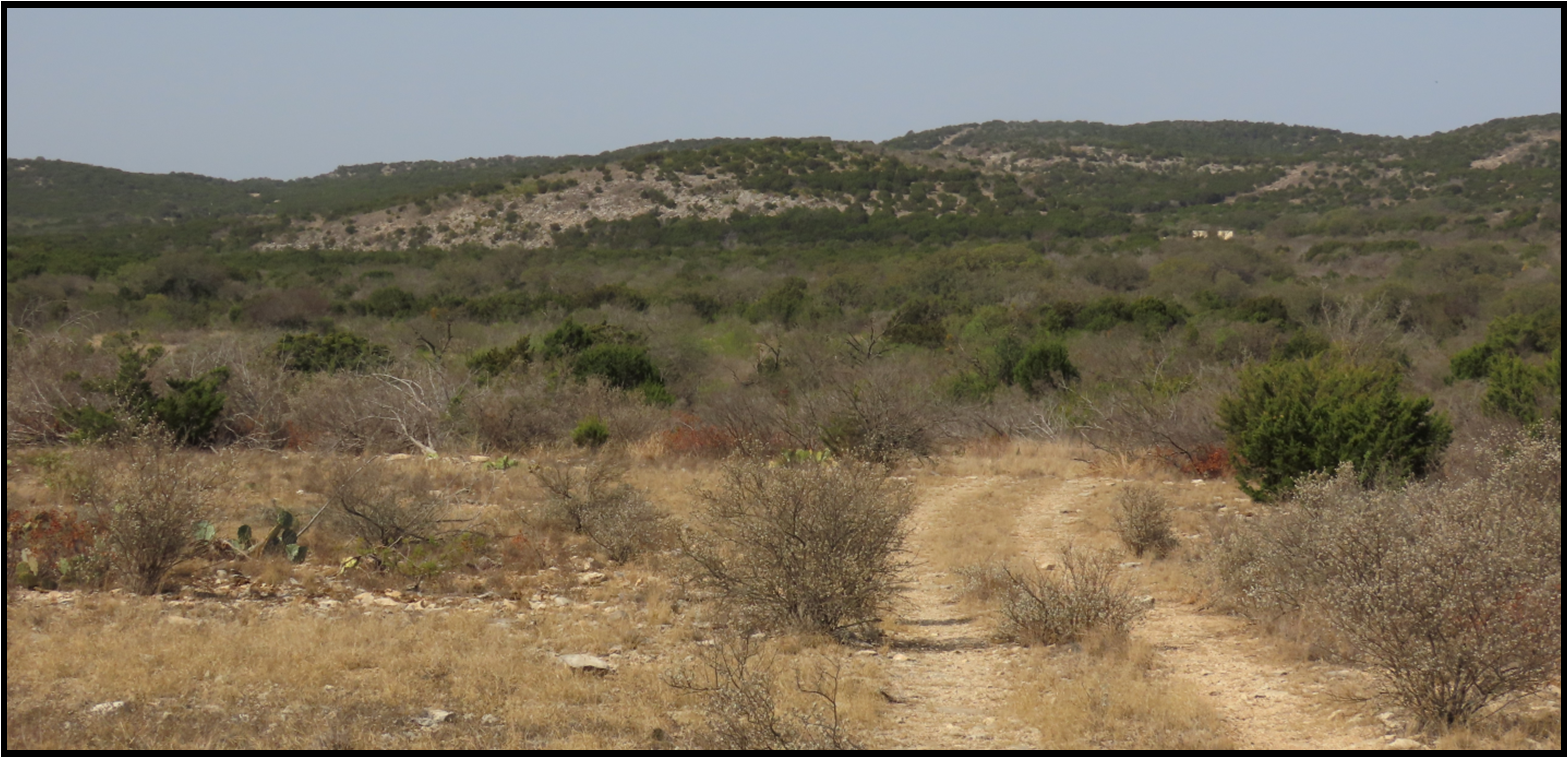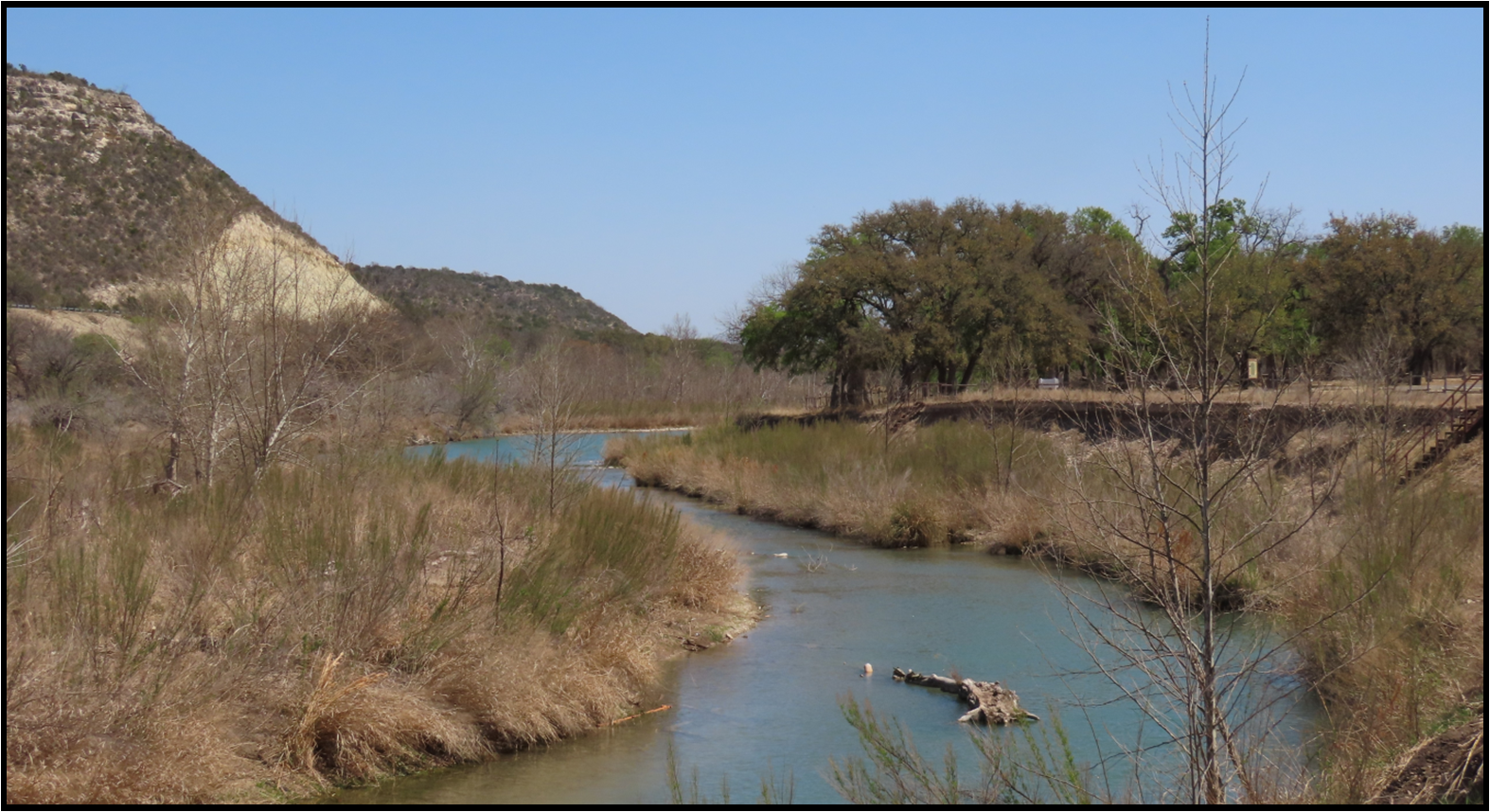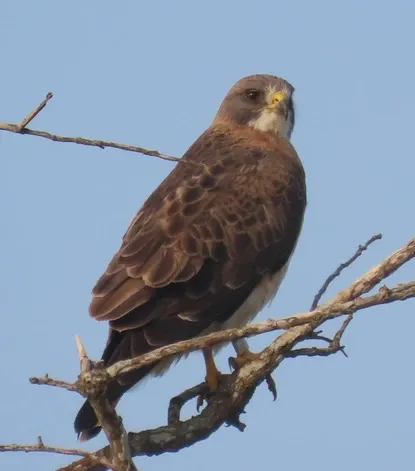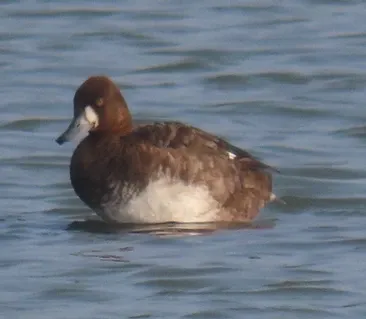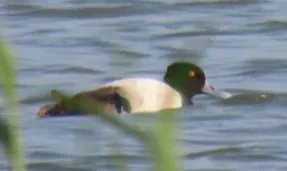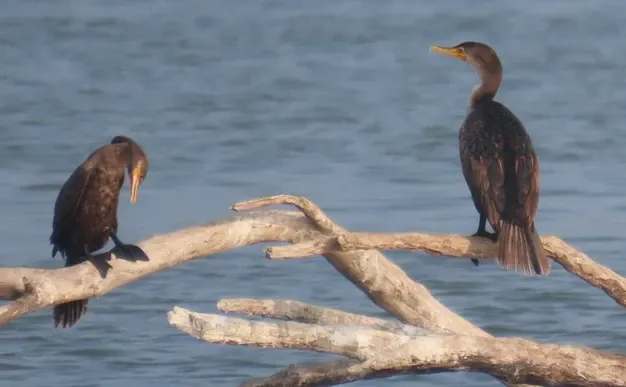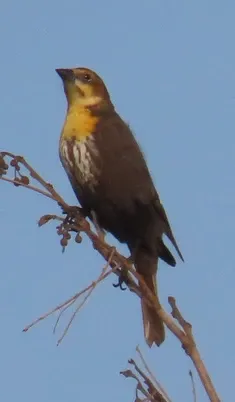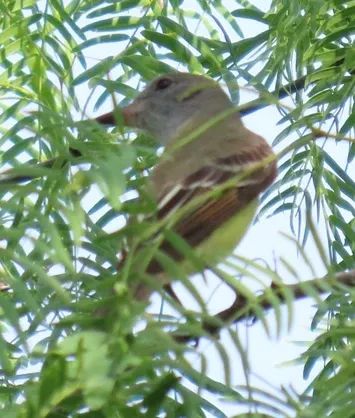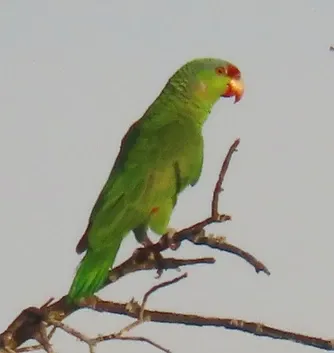Hidalgo County (Texas) Birdathon
© 2025 Alamo Birding Services LLC
By Mary Beth Stowe
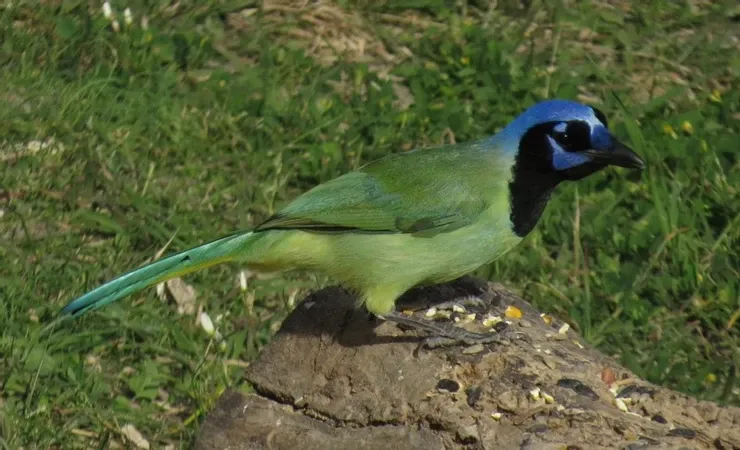
4/24/21
Was hoping that my first bird would be the Lesser Nighthawks that nest on our roof, but that honor actually went to the singing Tropical Kingbird somewhere in the dark! On the way to the freeway, the noisy cacophony of the Great-tailed Grackles (2) and the chirping of the House Sparrows (2) were next.
As usual, the first bird to get added to the list after arriving at Bentsen Rio Grande State Park an hour before dawn (I actually got there earlier than that) was a singing White-winged Dove (4) and surprisingly a Collared Dove (5)! Heading in, the many Pauraques (6) were tuning up, as well as a Mockingbird (7). Eventually I heard a “McCall’s” Screech Owl (8) well enough to be convinced I wasn’t hearing a distant Cane Toad! ☺ I startled some Mourning Doves (9) as I made my way to the Eagle Pond bench to sit for a while, adding a Great Horned Owl (10), Cardinal (11), and flyover Black-bellied Whistling Ducks (12). After the Pauraques quit I decided to make my way to the resaca, and was disappointed that I had not only not heard any Elf Owls, but Chuck-will’s-widows as well, when I suddenly heard one singing in the distance (the Chuck, that is – 13)!
Down at the resaca the following players brought in the dawn: Brown-crested Flycatcher (14), Yellowthroat (15), Common Gallinule (16), Couch’s Kingbird (17), Pied-billed Grebe (18), and Olive Sparrow (19). Some Red-winged Blackbirds (20) flew over with some grackles, and several Coots (21) became visible on the water. A Kiskadee (22) yelled from somewhere, and was surprised to hear a Roadrunner (23) singing (although I shouldn’t be as they do occur there)! A Golden-fronted Woodpecker (24) announced the sunrise as did a Brown-headed Cowbird (25), and before I left I spotted an Anhinga (26) down a ways. On the way out I was serenaded by an Altamira Oriole (27), a couple of Yellow-billed Cuckoos (28 – always a delight to hear), a chirping Verdin (29), a flyover Dickcissel (30), a coke-bottle White-tipped Dove (31), and a guttural Long-billed Thrasher (32). A Gray Hawk (33) whistled back towards the resaca, and a Baltimore Oriole (34) chattered from a tree. A Ladder-backed Woodpecker (35) laughed, and some Chachalacas (36) got upset about something, but weren’t chorusing yet (that would happen once I got to the levee ☺). A Clay-colored Thrush (37) sang sadly and then did its querulous call, and at the canal the Cave Swallows (38) voiced their annoyance! Closer to the buildings the Inca Doves (39) were tuning up, as were the Green Jays (40), and a Green Heron (41) “scalped” unseen from somewhere.
Slowly cruised Old Military Highway on my way to Anzalduas to see what I could pick up along the back roads; Eastern Meadowlarks (42) were singing from the fields, and a Blue Grosbeak (43) sang from the National Butterfly Center property. Picked up Starlings (44) on the wires, as well as a chattering Scissor-tailed Flycatcher (45). Now that the levee is closed to traffic, I returned to the truly “old” Military Highway that’s a dirt road through the woods (but in great shape now), and picked up a singing House Wren (46), White-eyed Vireo (47), Black-crested Titmouse (48), and a “wheeping” Hooded Oriole (49). Once back onto the pavement I made a right on FM 494 towards Anzalduas and picked up a Lark Sparrow (50) on a wire, a flyover Caracara (51), a pair of Harris’ Hawks (52) on poles, and a single Rough-winged Swallow (53) on a wire near the Academy.
A Loggerhead Shrike (54) greeted me on the wire when I made the turn on the entrance road, while a pair of Mottled Ducks (55) flew over the road. A nice Swainson’s Hawk (56) posed on a dead tree, and spotted a couple of Killdeer (57) coming over the levee and driving over the spillway. Heard Laughing Gulls (58) out one window and a singing Marsh Wren (59) out the other! Once past the entrance office I noticed a mess of birds out in the river, so even though I suspected any Sprague’s Pipits were long gone, I parked and hiked across the field to get closer to the river birds; amongst them were a Great Blue Heron (60), a Great Egret (61), a couple of Shovelers (62), and even more surprising at this late date, a pair of Lesser Scaup (63)! (Ebird, liked them, though… ☺) Blue-winged Teal (64) were easy to pick out, whereas a pair of beat-up Gadwall (65) were a little harder to discern save for their tell-tale white speculum patch! Had side-by-side Double-crested (66) and Neotropic Cormorants (67), swooping Barn Swallows (68), and a complaining Forster’s Tern (69)! On the island was a subadult Black-crowned Night Heron (70) trying to hide, and as I walked back to the car, I couldn’t believe it: an American Pipit (71) called overhead with its distinctive, sweet pipit call! (EBird did not like that one! ☺) Continuing the loop in the car, a Tricolored Heron (72) flew by in the distance, and the resident Osprey (73) perched in a lonely tree in the picnic area. A sparse tree in front of me looked like it might have had waxwings in it (that turned out to be leaves), but even more surprising was a female Yellow-headed Blackbird (74)! Stopped at the dam to get the requisite nesting Cliff Swallows (75) and Rock Pigeons (76), and while pausing near the maintenance shack to eat half a steak sandwich, logged a Turkey Vulture (77), a Bronzed Cowbird (78) in a tree, a distant Beardless Tyrannulet (79) doing its dear dear dear song, and a fly-by feral Muscovy (80 – yeah, I know that’s pushing it…). On the way out logged a Curve-billed Thrasher (81) doing its whee-WHEET! call on the fly.
Swainson's Hawk
Female Lesser Scaup
Male - his head looks more rounded than normal, but he's getting ready to dive; note the slight "bump" on the back of the head.
Neotropic (left) and Double-crested Cormorants; Neotropic is smaller with an arrow-shaped gular pouch, while the Double-crested is best told by its orange lores.
Female Yellow-headed Blackbird
I planned this year’s itinerary a little differently in that I thought I’d include places that were reporting some rare birds for Hidalgo County in addition to most of the old standbys (which also had some rarities), so the next stop was Old Hidalgo Pumphouse, as an Ash-throated Flycatcher had been reported. On the way there a raptor on a pole turned out to be a Black Vulture (82), and I needn’t have worried about going out of my way to get the Monk Parakeets (83), as they’ve now started making their stick nests on the main drag in Hidalgo (and they were flying all over the park as well)! Before entering the park I heard some Western Kingbirds (84) making a fuss, and walking through their gardens some Ruby-throated Hummingbirds (85) were fighting each other. The gate was locked, so I circled around the building to the channel; no kingfishers or Black Phoebe, so I headed down the trail next to the vegetation and the levee, as that’s where the flycatcher had been reported. I walked down as far as the overlook, and that turned out to be quite productive, with a Rose-breasted Grosbeak (86), a lagging Ruby-crowned Kinglet (87 – eBird liked that one, too, as I thought it was kinda late for them), a yowling Catbird (88), a creeping Black-and-white Warbler (89), and the best bird, a furtive Yellow-breasted Chat (90)! No Ash-throated Flycatchers, but there were plenty of Brown-cresteds around…
On to Quinta Mazatlan, where a Prothonotary Warbler had been reported. Right in the parking lot added Chimney Swifts (91) overhead, and the wooded trails had several migrants: Tennessee Warbler (92), a Great Crested Flycatcher (93), and plenty of Nashville Warblers (94) were to be had. I was going to skip the Ebony Trail but I ran into John Brush, the staff naturalist, who told me he had several thrushes back there where the Pacific-slope Flycatcher had been hanging out all winter, so that sent me back! The beginning of the trail was quite productive in itself, with a Black-throated Green Warbler (95) and a surprise Pyrrhuloxia (96) chattering (a surprise only in that they’re more expected in the brush country)! Back by the fence, two of John’s thrushes bounced around, but only one let me get a look – his Gray-cheeked (97)! On the way to the Discovery Center a Buff-bellied Hummingbird (98) chattered from somewhere, and a Purple Martin (99) gurgled overhead. I would have loved to report that the Prothonotary Warbler at Ruby Pond won the title of being Bird #100, but he never showed, so that honor went to a Northern Waterthrush (which is nothing to sneeze at, either)!
Great Crested Flycatcher - note the darker gray throat and pale base to the bill.
Edinburg Scenic Wetlands was next, where American Goldfinch and Mourning Warbler had been reported, and while I was still at Quinta, a report came over the Rare Bird Alert of a singing Bell’s Vireo there, so I was hopeful! Poking around the wooded trails (also a good migrant trap), no vireo sang for me, but a nice couple pointed out a Painted Bunting (101) they were enjoying in the old “Green Kingfisher Pond” that was being renovated! The North Pond had its usual cormorants, but Least Grebe (102), Snowy Egret (103), and Yellow-crowned Night Heron (104) were all good for the list. At the South Pond added Black-necked Stilt (105), and a female Ruddy Duck (106) hiding amongst more cormorants, but alas, no kingfishers of either flavor at either pond…
The La Sal del Rey Route was next, and even though a Ferruginous Pygmy Owl was reported there, I knew I had no chance in ---- of seeing that, especially since it felt like ---- when I got there: I knew it was getting hot but I took a double take when Heppy’s (my Forrester) thermometer read 100 degrees!! Holy smokes! (What shocked me even more were all the cars parked at both trailheads to the actual La Sal del Rey and the people walking out and back to match!!) I had little hope of picking up much of anything along the route in that heat (much less the owl), but surprisingly some things were singing, and by stopping every mile and just listening for two minutes (and I opted to stay in the shade of the car rather than get out like I normally do) was able to add both Bewick’s (107) and Cactus Wrens (108) to the list! But the big jackpot was at the farm pond at the north end of Brushline, which was stuffed with Wilson’s Phalaropes (109)! Picked up a Bullock’s Oriole (110) chattering and singing from one of the willows, and as I made my first pass of the pond a Green-winged Teal (111) flushed and flew off. What was left included several Cattle Egrets (112) in lovely breeding plumage, Long-billed Dowitchers (113) probing for lunch, a pair of courting Gull-billed Terns (114), a bobbing Spotted Sandpiper (115), a young Roseate Spoonbill (116) keeping company with a Great Egret, and a Stilt Sandpiper (117). There were some other smaller things in there that I just couldn’t make out, so had to let them go… Had more Harris’ Hawks and Pyrrhuloxias along the road, and on Ken Baker Road I paused to check out some distant Turkey Vultures, but by doing so was able to catch sight of a lovely White-tailed Hawk (118, that I never would have caught with the naked eye)! By that time it was 103 out there; I dunno what those walkers were thinking!!
Bewick's Wren
Next on the route was Hargill Playa for the Reddish Egret (and whatever else we could pick up), but just before reaching Hargill a Common Nighthawk (119) batted by! Once parked near the gate I doused myself with water before even attempting to walk down the road to get a decent peek into the playa (I sure don’t remember all those mesquites blocking the view!). The angle of the sun wasn’t the best, but the first identifiable bird (or birds, really) were several American Golden Plovers (120), a nice surprise! Tons of Shovelers were out there as well as more phalaropes, but again, there were several smaller things in there that I just couldn’t ID; I did pick out a nice Semipalmated Plover (121), and the “lineup of larids” that always seems to be there was made up of lots and lots of pink Franklin’s Gulls (122)! And way across there was the (seems like) resident Reddish Egret (123), doing his dancing thing, also in the company of a Great Egret!
Bird mob at Hargill Playa - mostly Franklin's Gulls, but a couple of Avocets are also visible...
Made a quick stop at the “1015 Pond” as it was on the way to Estero Llano Grande State Park, but added nothing new (no kingfishers there, either). Estero is another standby, but this time had the added attraction of a late Redhead and the continuing female Elegant Trogon! I think it may have cooled down to 98 or something by the time I got there ☺, but it was still pretty sweltering, so I doused myself again and headed in. I remember the “Green Jay Trail Drip” being so wonderful last year, but now I saw that the thing had been “vandalized” (Ranger Javier told me later that a Chachalaca had gotten into it…), so although that was disappointing, the Wood Thrush (124) at my feet certainly was not!
Headed on to the deck where a quick perusal of Ibis Pond added Least Sandpiper (125), Lesser Yellowlegs (126), and a White-faced Ibis (127) sailing in! I thought I glimpsed a Sora along the boardwalk but just didn’t get a good enough look… Further along the boardwalk I heard a Great Crested Flycatcher give its distinctive wheep, and had a female Summer Tanager (128) in one of the mesquites. Closer to the Tropical Zone cutoff had a nice Yellow Warbler (129) and a snapping Lincoln’s Sparrow (130).
It was pretty quiet in the Zone; went straight to the drip behind Pauraque Hall and gave it 15 minutes, but the only things to come in were a pair of White-tipped Doves. A Black-throated Green Warbler chinked overhead, and several Nashvilles passed through, but nothing new to add to the list. That’s when I ran into Ranger Javier, along with Ranger John and Huck, all who were doing a Big Day for the Great Texas Birding Classic! I joined them for awhile in the Indigo Blind where only an Archilochus hummer came by (and John almost swiped my camera thinking it was his ☺), then we went our separate ways. They had an electric tram, so they caught up with me shortly where I had just heard a Least Flycatcher (131, which they had already gotten), but they got me on an Eastern Kingbird (132) perched on top of a tree! Nice spot! After a thorough search of the woods near the Green Jay area with nothing new to add (much less the trogon), I was bemoaning the fact that not even a Carolina Wren had peeped, when out in the parking lot one finally decided to sing (133)! Talk about the 11th hour!
Theoretically, I still had time to do Santa Ana, but with the heat I was fighting off a headache, so I just did a quick swing around the “Entrance Pond Trail” as several warblers were reported in that vicinity, but it was just too hot for anything to be moving (except gobs of Rough-winged Swallows swooping around), so I called it a day and headed home, making a swing around 7th Street to see if perchance our mixed Red-crowned/Lilac-crowned Parrot pair was near the nest hole! Nope, so I indulged in a DQ dipped cone and then headed to the apartment – where the Lilac-crowned half of the pair (134) was sitting on a pole! That was really the 11th hour! ☺
Lilac-crowned Parrot - the darker forehead and gray lores help separate it from the similar Red-crowned!
(And yet another surprise: while reviewing a video of those courting Gull-billed Terns at the Brushline pond, a heretofore undetected Greater Yellowlegs – 135 – went prancing across the screen! ☺)
Greater Yellowlegs photobombing a female
Gull-billed Tern being courted..
